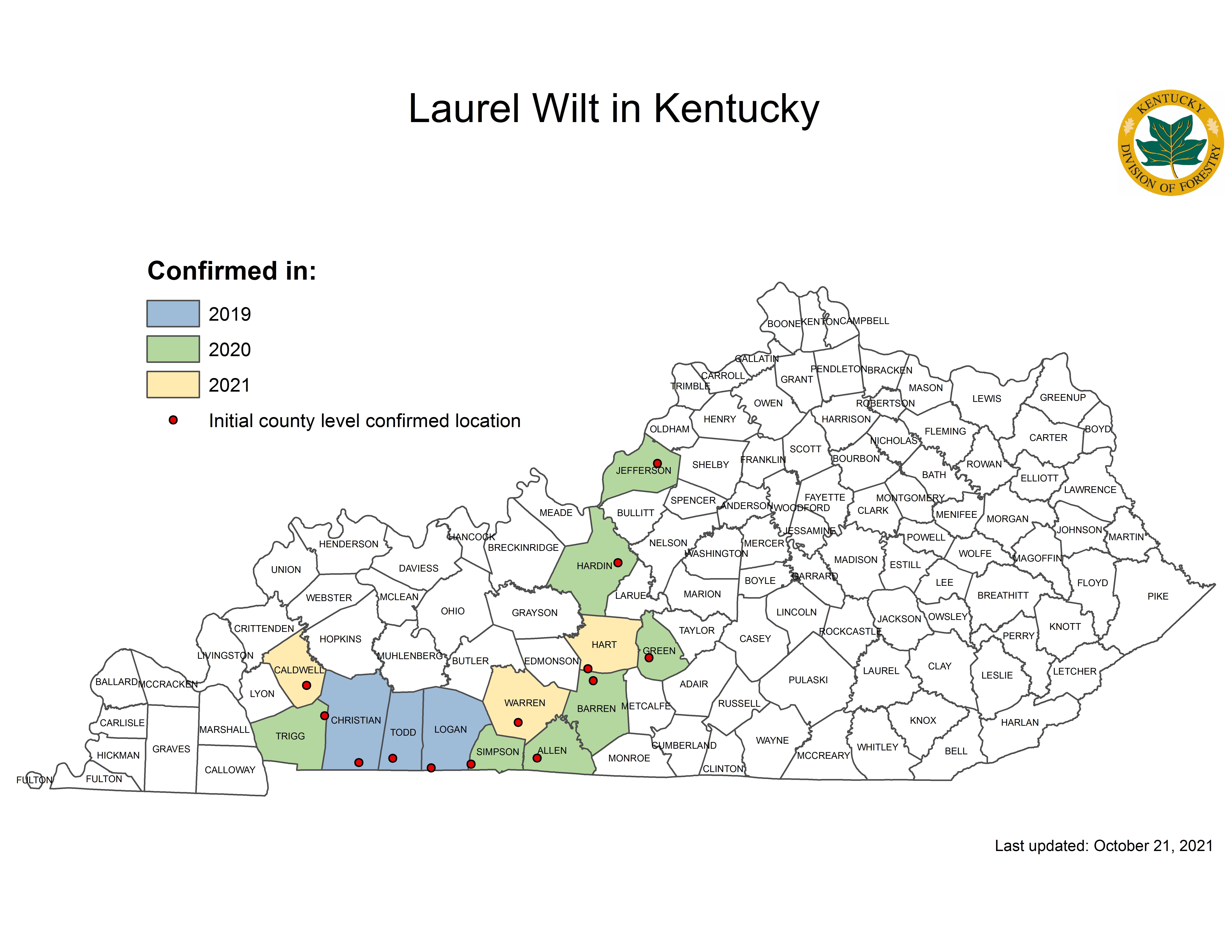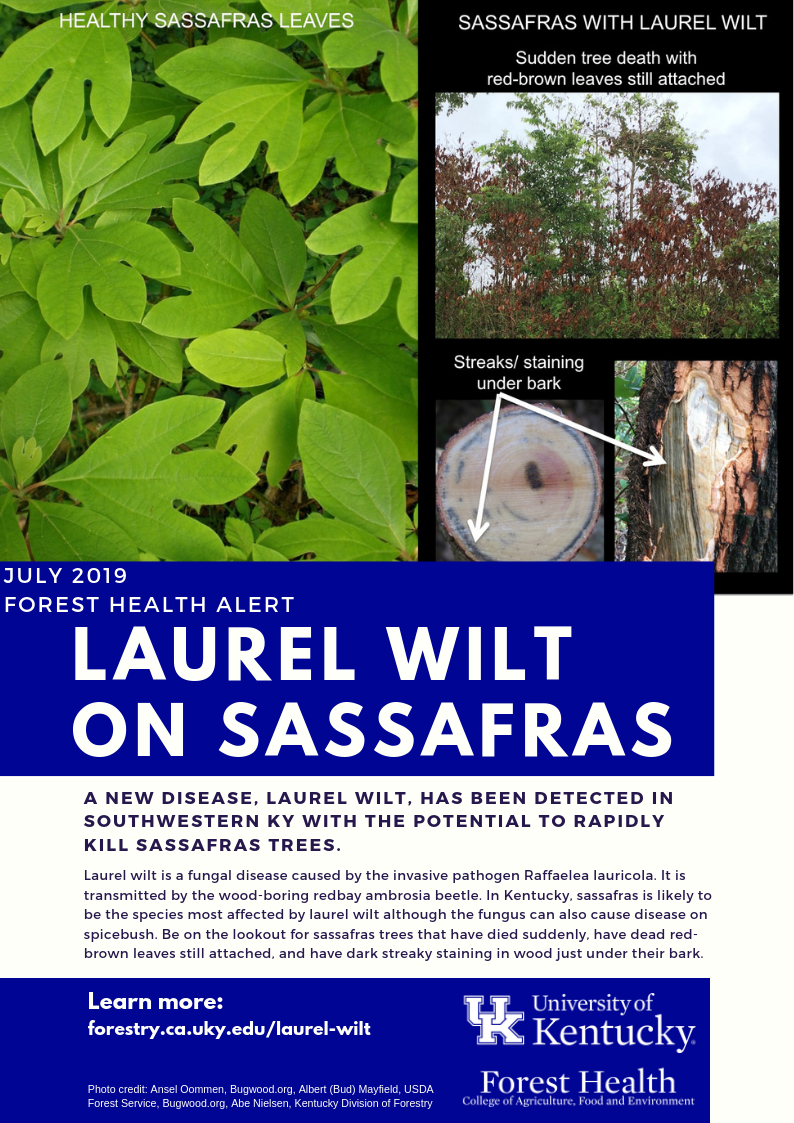Laurel Wilt
Sassafras trees are coming under threat from a new disease, laurel wilt. This disease is caused by a fungus and vectored by the Redbay ambrosia beetles. It results in rapid wilting and death of susceptible trees and shrubs. In our area, sassafras is the plant most likely to be impacted by this deadly disease. This disease was found in southwestern Kentucky (Christian Co.) in July 2019 but it has had devastating effects on other members of the Laurel family in many areas of the southeast United States.
What is it?
Laurel wilt is caused by a fungus, Raffaellea lauricola, that is transmitted to trees and shrubs of the laurel family (Lauraceae) by the wood-boring redbay ambrosia beetle (Xyleborus glabratus). These beetles are considered an invasive species, native to Asia and first detected in Georgia in 2002. All ambrosia beetles (and there are many other native and non-native ambrosia beetles) carry fungi that they feed on which grow in their tunnels within host trees. In the case of redbay ambrosia beetles, the fungus they carry causes severe disease and mortality to their host trees. They have infected many trees and shrubs in the southeast United States, starting along coastal regions but currently spreading inlands.
What does it do?
Redbay ambrosia beetles bore into trees or shrubs in the Laurel family, such as redbay, sassafras, and spicebush, and transmit the spores of the fungus to trees. The fungus infects the xylem, blocking off the vascular system and causing wilting and mortality in these trees. Death can occur fast, just weeks to months after being infected.
Evidence of redbay ambrosia beetles may also include very small circular holes in the bark, occasionally accompanied by a thin “toothpick” of sawdust and waste. These beetles are small, typically 1/16 inch long with dark brown body and a downward sloping rear. The fungus that they vector causes wilting of leaves soon after introduction to the host tree, making leaves turn dark reddish-brown and, on many tree species, remain on the tree for many months. In most trees and shrubs infected, the fungus causes distinctive, dark-staining streaks within the sapwood.
How can it be managed?
Currently, no treatment has been developed that can cure laurel wilt or protect trees from infection. If infected, trees should cut down and chipped to prevent further spread of these beetles and fungus. Chips from the infected tree should be destroyed by burning on site or covered with a tarp to prevent spread of the beetles. Stumps should be ground down to the soil level and no debris of the tree should be transported from the site.
Although the female redbay ambrosia beetles can fly between trees, the majority of laurel wilt spread has occurred through human transport of infested material, particularly by moving firewood. The best management options for preventing the spread of laurel wilt is to prevent the movement of firewood or other untreated timber into the area. Early detection of the beetle and proper destruction of infested material are imperative. By being alert for the symptoms and by preventing the movement of infested materials into the area, laurel wilt can be prevented from spreading rapidly in Kentucky.



Resources for further information:
Kentucky and Tennessee Tree Health Resources
USDA Forest Service resource article on laurel wilt
USDA Forest Service article on redbay ambrosia beetle
Forest Health, Southern Regional Extension Forestry distribution map
North Carolina Forest Service laurel wilt Frequently Asked Questions
USDA National Invasive Species Information Center related resources
Alabama Forestry Commission information and management recommendations
